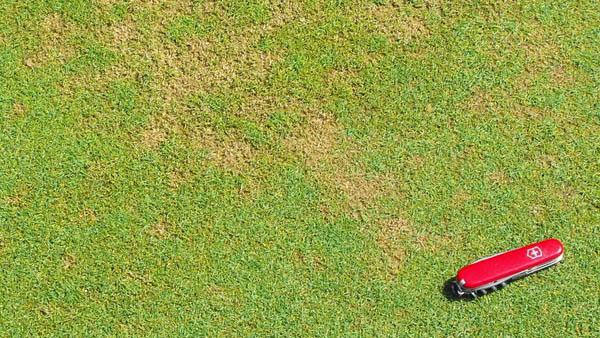Independence Day fireworks usually signify the second half of summer; the downhill slide toward Labor Day and back-to-school; the second half of the 100 days of you-know-what.
The middle of summer, however, also is the height of Pythium root rot season, or as researchers at North Carolina State University recently called it - Pythium-Palooza.
Pythium root rot in creeping bentgrass putting greens can occur at any time during the growing season mostly in areas that drain poorly or are over-irrigated. Areas with excessive thatch or organic matter also can be susceptible.
Symptoms manifest as irregular patterns, spots or patches that can be orange or yellowish in color and then dark, greasy patches on individual crowns and roots, according to NCSU research. The pathogen often can spread by following drainage patterns across the turf. Eventually, root mass and depth are severely depleted.
Pythium root rot can be managed through cultural practices and chemical applications.
Cultural practices that can assist in preventing Pythium root rot or reduce activity include tree-management plans that reduce shade cover and aid in air movement, regular hollow tining and topdressing applications of at least 5,000 pounds per 1,000 square feet per year. Other remedies can include reducing thatch, improving drainage or greens reconstruction.
Preventive chemical control options, according to NCSU, can include products with active ingredients such as cyazofamid, mefenoxam or propamocarb applied at label rates every two to three weeks during the growing season and when rain persists for two to three straight days.
Curative control options, according to NCSU, can include ethazole - watered in to prevent burn - followed by applications of systemic fungicides such as cyazofamid, mefenoxam or propamocarb after two-three days.
Other actives that have been shown to be effective in a Pythium root rot program include azoxystrobin evern 10-14 days, azoxystrobin in combination with propiconazole every 14-28 days, azoxystrobin with tebuconazole every 10-21 days and chlorothalonil with fluoxastrobin every seven to 10 days.


